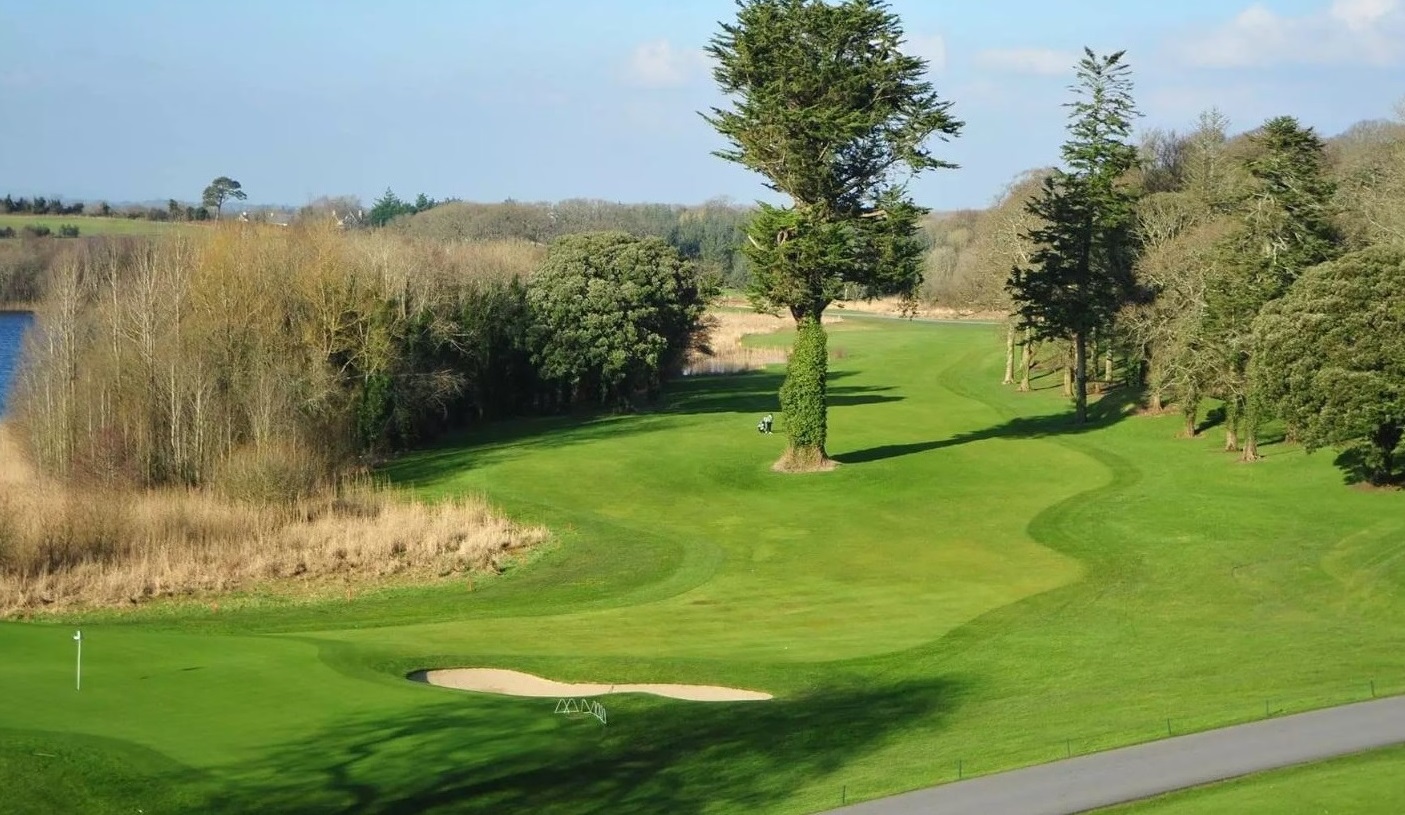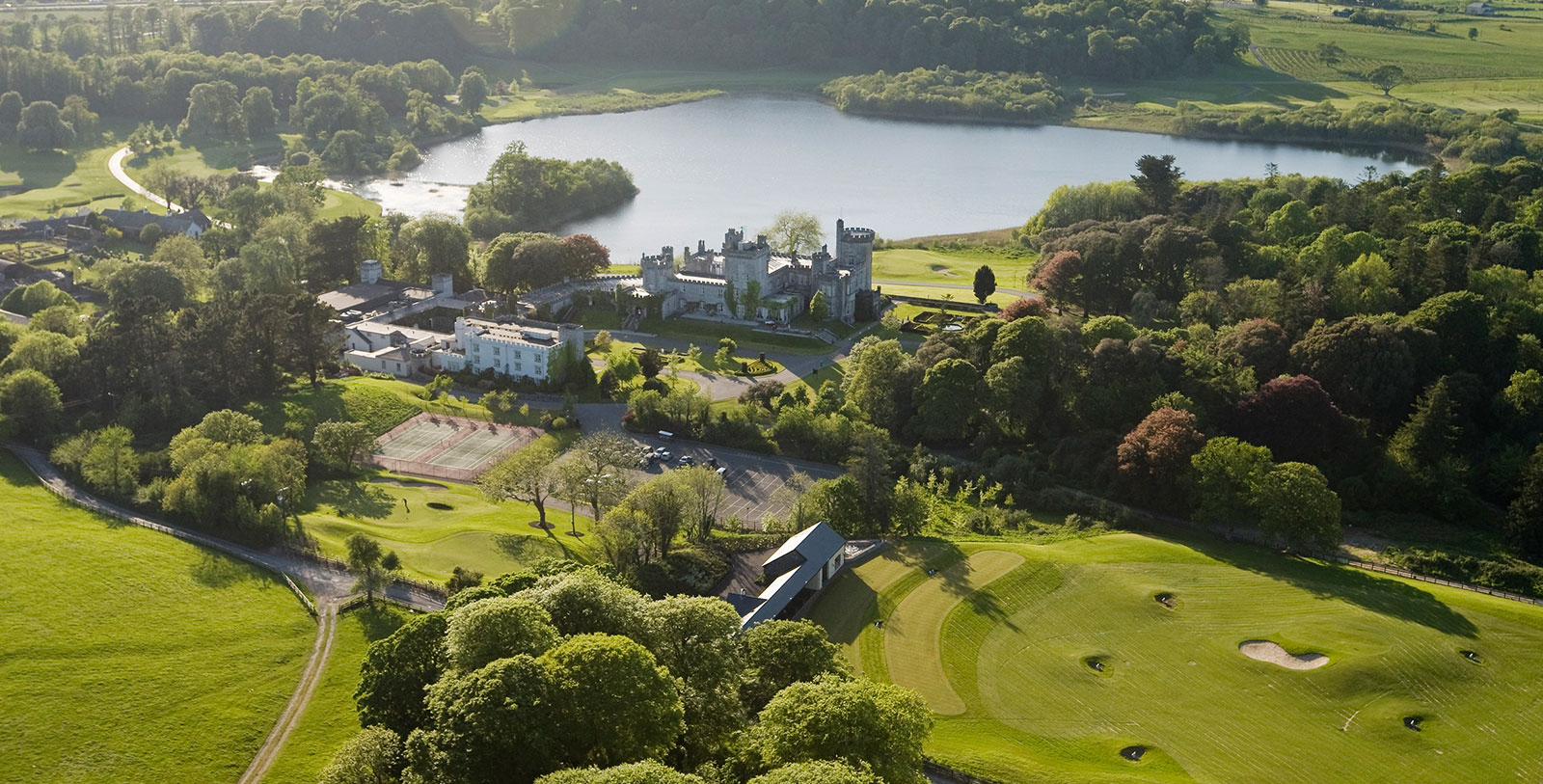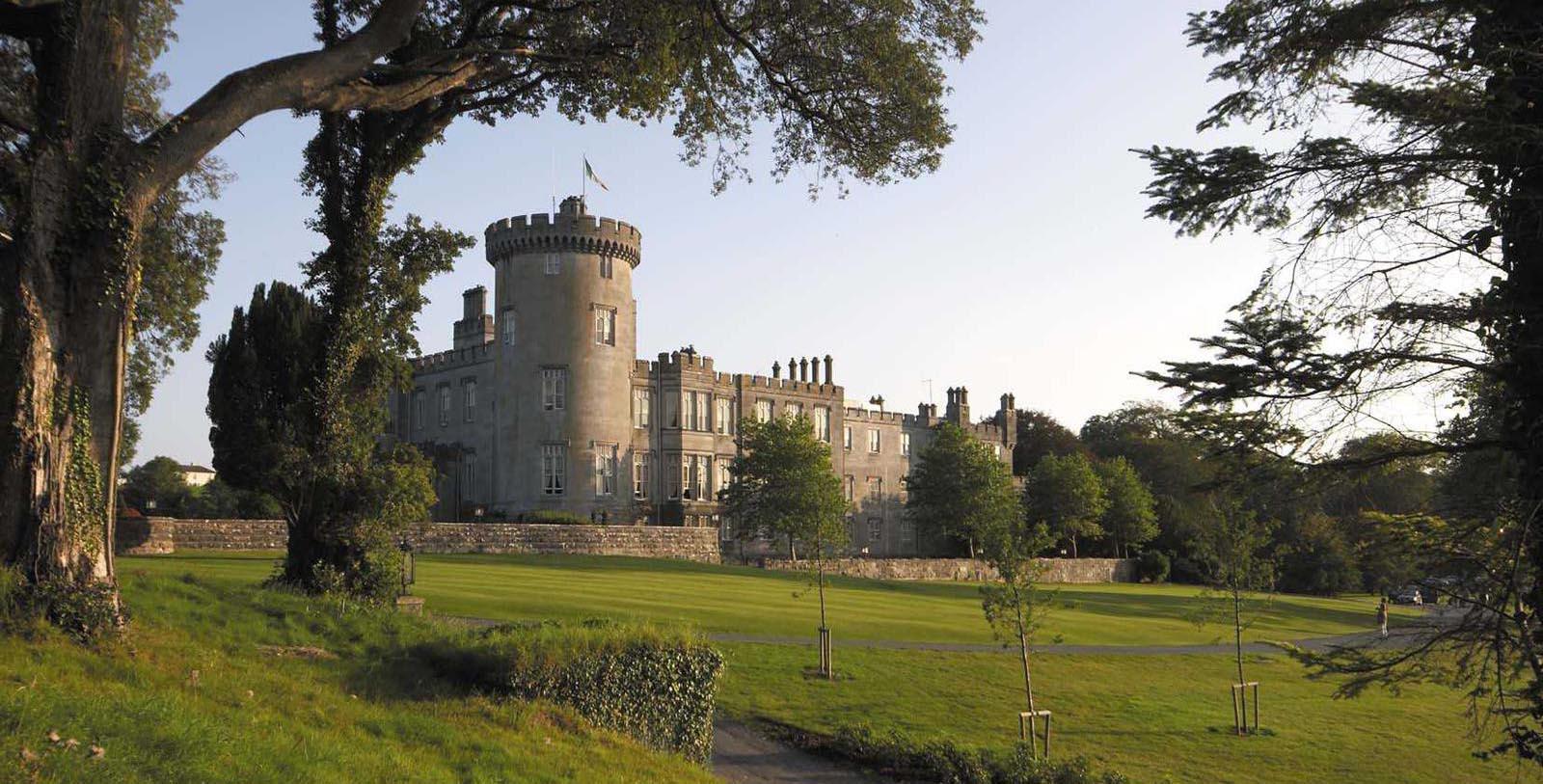Receive for Free - Discover & Explore eNewsletter monthly with advance notice of special offers, packages, and insider savings from 10% - 30% off Best Available Rates at selected hotels.
golf
Discover the Dromoland Castle Golf & Country Club, which has been one of Ireland’s best destinations for golf since the 1960s.

Dromoland Castle Golf & Country Club
Get introduced to the magnificent 6,824-yard, par-72, 18-hole golf course that constitutes the Dromoland Castle Golf & Country Club. One of the finest courses in Ireland today, it features amazing practice facilities and a welcoming environment.
WATCH NOWOpen since the early 1960s, the Dromoland Castle Golf & Country Club is an impressive 18-hole, par-72 championship course set on Dromoland Castle’s magnificent 450-acre estate. Combining gentle hills, ancient trees, and unexpected water hazards, this immaculately maintained course presents challenges and thrills for golfers of all abilities. One of the finest courses in Ireland today, it features amazing practice facilities and a welcoming environment. The course had specifically emerged amid the efforts of American industrialist Bernard P. McDonald to turn Dromoland Castle into a luxurious holiday retreat. Taking years to build, the course featured a gorgeous collection of holes that offered stunning views of the surrounding countryside. To McDonald’s delight, the golf course quickly became one of the most popular attractions at Dromoland Castle. In fact, it even established itself among the finest golf courses along Ireland’s famed Atlantic coastline. Subsequent renovations during the early 20th century only further solidified the facility’s vaunted reputation. Thanks to the efforts of talented landscape architects Ron Kirby and J.B. Carr, the golf course was revitalized to provide an even more rewarding experience. A stunning success, the work has since preserved the Dromoland Castle Golf & Country Club’s status as an elite destination for golf. Perhaps the greatest example of their success was the arrival of the KMPG Women’s Irish Open in 2022. Held at the club that September, the tournament saw Czech golfer Klara Spilkova win the title after an inspiring round of play.
Dromoland's Golf Academy is a state-of-the-art complex located on Dromoland Castle’s magnificent estate. After his incredible revamping of the Dromoland Course, Ron Kirby then turned his hand toward designing the most modern golf practice facility in Ireland. The stone clad, slate roofed structure houses nine driving range bays and a fully enclosed teaching bay. All the bays are fitted with Golf-Tech’s second generation fully automated “Power Tees,” allowing for more enjoyable and better-quality experience. With four bunkered target greens ranging between 100 and 250 meters, the driving range continues to provide a wide variety of shot selection. During the summer months, the two 500 square-meter grass teeing areas are open for use. This allows golfers instant feedback from conditions exactly as they would find on the fairways on the golf course. The short-game area includes two USGA specification greens with the same Penn A4/G6 Creeping Bent grass used on the main golf course. It also includes a 500 square-meter Putting Green to hone the perfect stroke before you tackle Kirby’s greens on the course, and a 450 square-meter Bunker and Chipping Green. The Bunker and Chipping Green offer a number of lies, slopes, and grass lengths to practice from. In addition to a well-shaped, large greenside bunker, there is also a riveted face links style bunker that was modelled on the famous ‘Road Hole’ bunker on the 17th at St Andrews. Few places in Ireland can offer such a memorable place to play a round of golf than the renowned Dromoland Castle Golf & Country Club.
-
About the Location +
Dromoland Castle Hotel is nestled within the verdant hills of County Clare, Ireland. County Clare was once the ancient Gaelic homeland for the Kingdom of Connacht. The Kingdom of Munster—one of its neighboring rivals—annexed the realm during the 10th century and renamed it as “Thomond.” It was during this time that a nobleman from Thomond named Brian Boru came to power. Becoming the King of Munster, he subsequently seized the coveted title of High King of Ireland in 1002. Boru eventually met his glorious end fighting against a Viking invasion at the Battle of Clontarf, where his forces successfully drove the invaders from Ireland’s shores. His descendants would come to call Thomond home, forming the Kingdom of Thomond in 1118. For the rest of the Middle Ages, the O’Brien clan fought to protect their claim to Thomond from Norman knights, English lords, and rival families of noble lineage. By the 1400s, the O’Briens had successfully reasserted their dominance over the land, becoming the undisputed Kings of Thomond once more. But their victory was not to last. Following a failed rebellion against mounting English influence in the 1530s, King Henry VIII of England initiated a conquest to subjugate all of Ireland. King Murrough O’Brien surrendered his crown to Henry, turning the Kingdom of Thomond into the Earldom of Thomond.
English administrators then combined Thomond with other lands in 1565, forming the first iteration of present-day County Claire. Parts of Thomond now reside geographically between County Clare and County Limerick. The closest town to Dromoland Castle Hotel is Newmarket-on-Fergus. Known historically as “Corractlin,” archeologists speculate that Newmarket-on-Fergus grew atop two historical marketplaces that resided along the Ogarney River many centuries ago. Local myths persist that Sir Edward O’Brien, the 2nd Baronet of Leaghmenagh, insisted that the town change its name to “Newmarket-on-Fergus” in honor of the horse-racing track in Newmarket, England. Further to the south is the City of Limerick, which raiding Norsemen founded around 922. Serving as the seat for the Kingdom of Thomond from 1106 to 1174, Limerick gradually emerged as one of the most economically important settlements in Ireland. Visitors today can visit outstanding historic sites within the city limits, such St. Mary’s Cathedral and King John’ Castle. Guests staying at Dromoland Castle Hotel can even explore the many more historic sites that inhabit the Wild Atlantic Way—a heritage route that traces the western Irish coast from Cork to Donegal. Among the most fascinating landmarks to resides along the trail are the Cliffs of Moher, Skellig Michael, Slieve League, and The Burren.
-
About the Architect +
Ron Kirby: One of the people most responsible for giving the marvelous Dromoland Castle Golf & Country Club its present appearance was the well-established golf course architect Ron Kirby. An America from Massachusetts, Kirby specifically got his start after competing studies in agronomy during the 1950s. He subsequently filled the role of superintendent for a number of golf clubs before finally securing an architectural position with the great Dick Wilson in 1958. His time with Wilson proved invaluable, as Kirby eventually worked on several renowned courses in southern Florida and the Bahamas. In fact, Kirby greatly absorbed much of Wilson’s design philosophies, specifically the latter’s penchant for using bunkers to dictate the overall flow of a course. Nevertheless, he managed to parlay a job as an associate to the great Robert Trent Jones Sr. after working with Wilson for five years.
Kirby proceeded to craft even more fantastic golf courses under Jones’ tutelage, helping to complete several outstanding projects throughout the United States. Indeed, his work under Jones even brought him back to the Caribbean regularly, as well as Europe. In 1970, Kirby succeeded in opening his own design firm in Atlanta, Georgia. (Interestingly, renowned South African professional golfer Gary Player served as an occasional partner for Kirby’s company.) He operated the business over the better part of the next two decades until he sold it to Golden Bear, Inc. Kirby then joined Jack Nicklaus Design Services as the head of its European division, before semi-retiring in the mid-1990s. But Kirby still continued to design golf courses independently for many years thereafter, working as a consultant for a variety of different projects. Some of Kirby’s best known courses debuted around this time, including Old Head Golf Links, which he helped craft in 1997. Kirby has since been remembered as one of the more influential landscape architects to define golf course design principles in the latter half of the 20th century.
J.B. Carr: The second-half of the duo to craft the current iteration of the Dromoland Castle Golf & Country Club was celebrated Irish golfer J.B. Carr. Carr had originally embraced golf after being exposed to the game by his adoptive parents. His family worked as the superintendents for the Portmarnock Golf Club, who allowed J.B. Carr to practice golf frequently on its course as a young man. Spending much of his youth training at the club, Carr finally began playing golf competitively amid World War II. Indeed, his initial victory involved a first place finish during the East of Ireland Amateur in 1941. The triumph foreshadowed the beginning of an amazing golfing career, which saw Carr ultimately win around 35 amateur tournaments throughout the mid-20th century. Perhaps Carr’s finest achievement as a golfer were four wins at the Irish Open Amateur, as well as three more at The Amateur Championship. His talents on the international amateur circuit eventually earned him a coveted spot on the British/Irish team for the prestigious Walker Cup for years.
Carr specifically represented Ireland 11 different times during the Walker Cup, which no other golfer has matched since then. (Only two other players have come close—Jay Sigel and Michael Bonallack.) Carr also captained two British/Irish teams in 1965 and 1967, respectively. He even received numerous individual accolades for his performances, including a celebrated Bob Jones Award from the USGA in 1961. When Carr finally retired in the early 1970s, he had succeeded in crafting a venerable reputation respected the world over. In fact, his skill managed to earn him the praise—and the ultimate friendship—of legendary professional golfers like Jack Nicklaus, Arnold Palmer, and Sam Snead! Carr nonetheless remained active in golf for many years following his retirement. Among the golf projects he pursued at the time included the construction or redesign of numerous golf courses, which he occasionally pursued alongside renowned American architect Ron Kirby. Today, J.B. Carr’s legacy is preserved via an induction in the World Golf Hall of Fame.
-
Famous Historic Golfers +
Gary Player, winner of nine major golf championships that include all four of the major tournaments.
Hale Irwin, winner of three major championships, specifically the U.S. Open in 1974, 1979, and 1990.
Sandy Lyle, winner of two major golf championships, specifically the 1985 British Open and the 1988 Masters Tournament.
Sam Torrance, winner of 44 championships on the PGA European Tour.



























